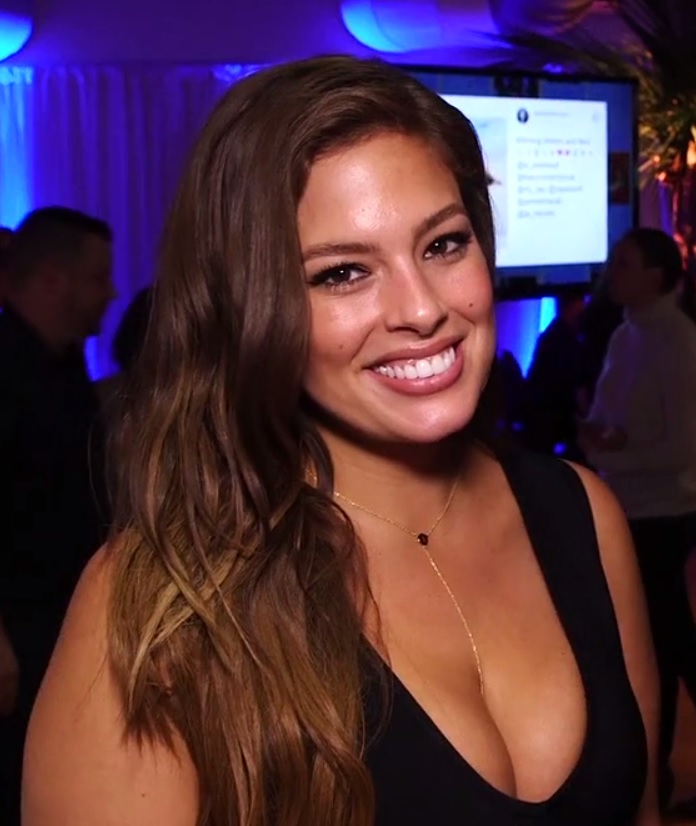Fashion industry’s representation of plus-size models unfinished
Ashley Graham, a plus-size model, at Sports Illustrated Swim City fan festival in 2016. Columnist Ashvini Malshe thinks the fashion industry needs to continue to work toward representing a variety of body types.
January 18, 2018
Last year saw plus-size models breaking barriers like never before. Ashley Graham appeared on the cover of Vogue; Candice Huffine walked on the runway for Prabal Gurung during New York Fashion Week; and Paloma Elsesser posed nude on a billboard for Glossier’s Body Hero campaign.
Furthermore, there were 90 appearances of plus-size models on the runway at Fashion Week, compared to just four appearances in fall 2016, according to an article from The Curvy Fashionista citing The Fashion Spot’s bi-annual diversity report which analyzes model representation.
But these wonderful breakthroughs aside, the fashion industry still has a long way to go in terms of full inclusivity of plus-size models on the runways, in the most prestigious magazines and in our frame of view. The industry needs to make more strides to include this particular demographic in the full scope of high fashion.
Indeed, The Fashion Spot report also cited that the appearances made by plus-size models during Fashion Week only comprised 3.46 percent of the total 2,601 appearances by models in 94 major New York shows.
It’s not enough that famous models like Graham and Huffine have a platform in the mainstream, though their vocalness on this issue is rather worthy of recognition. To truly affect how people perceive plus-size models and how they can create positive representation for a diverse range of body types, there needs to be greater recognition of how the sample size — or the typical size used by stylists who work for these editorials to fit whoever it is they are modeling — excludes plus-size models from being visible in the media.
Get The Daily Illini in your inbox!
The sample size impacts the way that plus-size models are depicted in fashion editorials; if they’re lucky, they can wear half of a sample dress, but the default is to have them pose nude. And in high fashion, the focus should be on the enchantment of the clothes, not on the bodies of these models which are already so heavily scrutinized.
In a Refinery29 article, Laia Garcia states that many renowned fashion designers are hesitant even to make sample sizes that can fit plus-size models because they don’t want to sully their images and cater to a “plus market.”
This may be hinting at the root of the problem.
Huffine spoke about her being an agent for change regarding the increased visibility of plus-size models in an interview with Refinery29.
Elaborating on the term “plus-size,” she said, “I don’t think it’s a bad word at all. But because of its existence, it’s divisive … Women shouldn’t have to be ostracized to a whole other floor or shop online because she doesn’t have a store to go to … It’s so refreshing to see everyone represented, so there’s someone you can identify with. If they’re not portrayed properly, then they’re going to think it’s not okay to be them, that they have to work to make changes.”
It remains that the advancements made last year were powerful. I was able to see women with nontraditional bodies represented in the mainstream. When I scroll through Instagram, I get to see Graham posing with sleekness and sophistication in clothing by Christian Siriano and Michael Kors. I got to see Huffine train for a marathon and cross the finish line as a champion.
Really, I had the delight of seeing these extraordinary women be champions in an industry that wants to divide them from the norm of thin bodies. That image itself is especially inspiring to everyday women who are made to feel self-conscious about not fitting into a mold that the fashion world expects.
Thus, seeing themselves represented in this world can be uplifting.
I only ask that the fashion industry keeps moving forward this year to ensure that a diverse range of body types gets equal representation and that they make a push to change how sample sizes are presented, as these factors are so undoubtedly tied to how we non-model women present ourselves to the world.
Note: if you would like to see the fabulous plus-size models who walked during New York Fashion Week in 2017, head to Glamour to check out the article, “Presenting All 27 Plus-Size Models Walked At New York Fashion Week.”
Ashvini is a senior in LAS.







